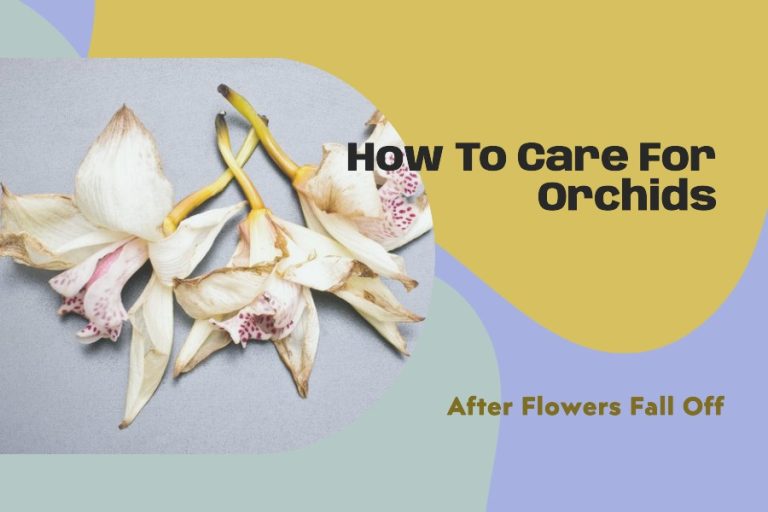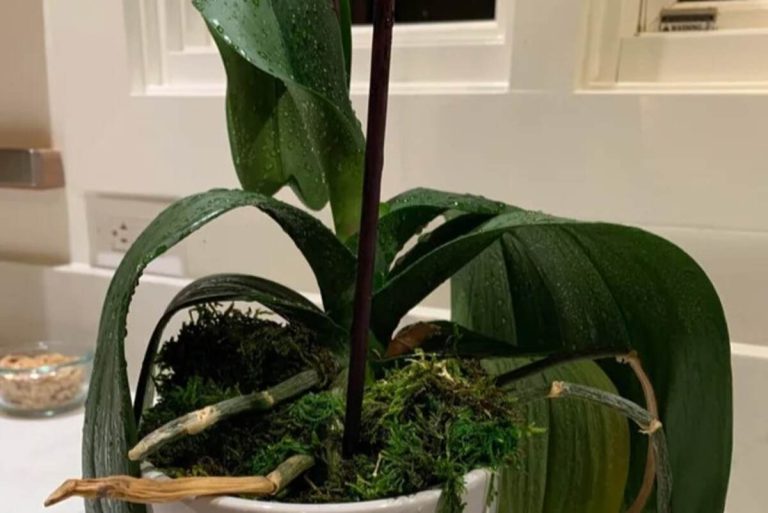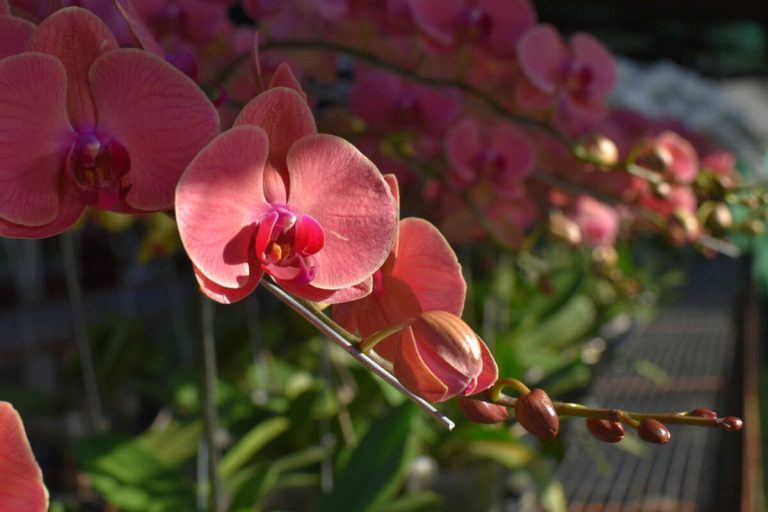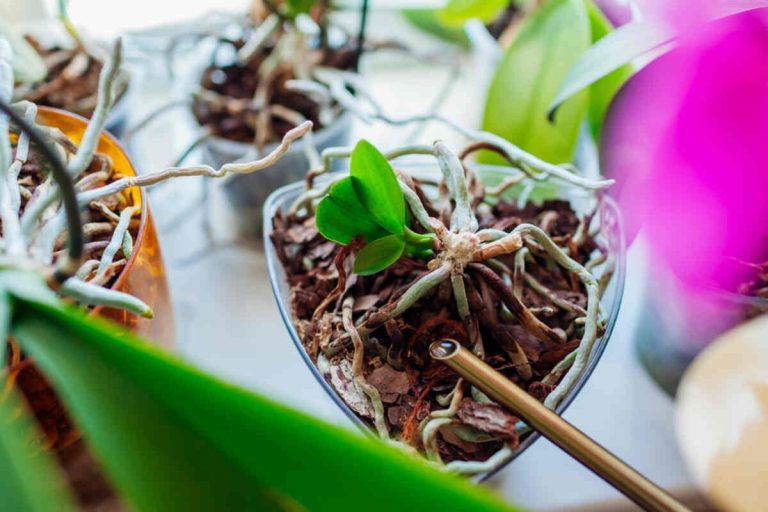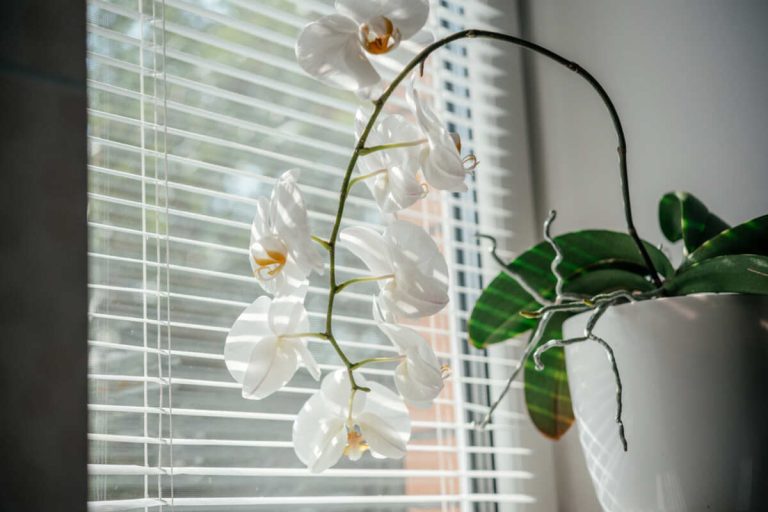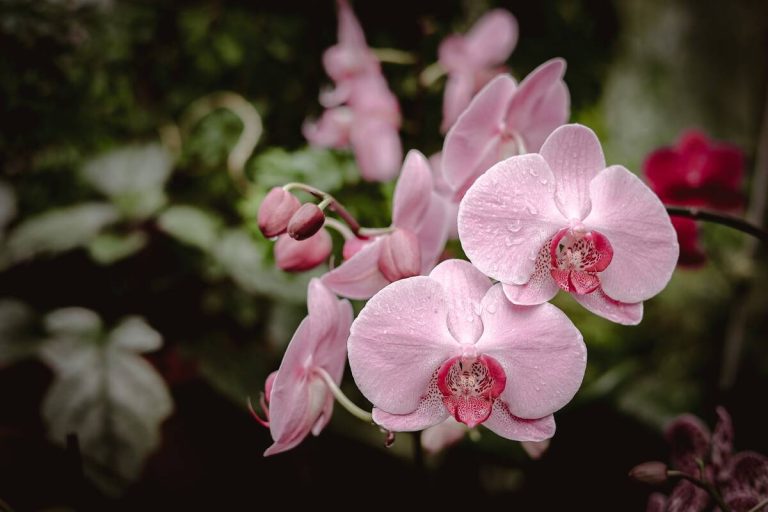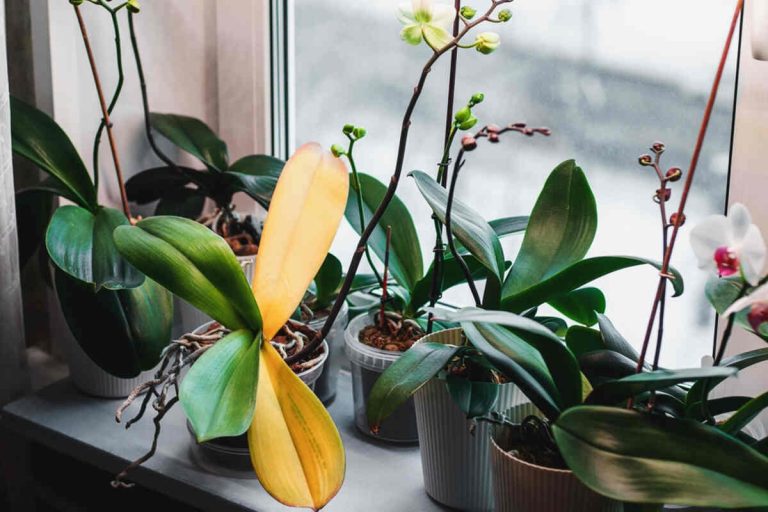Can I Use Orchid Fertilizer On Other Plants? – The Answer Here
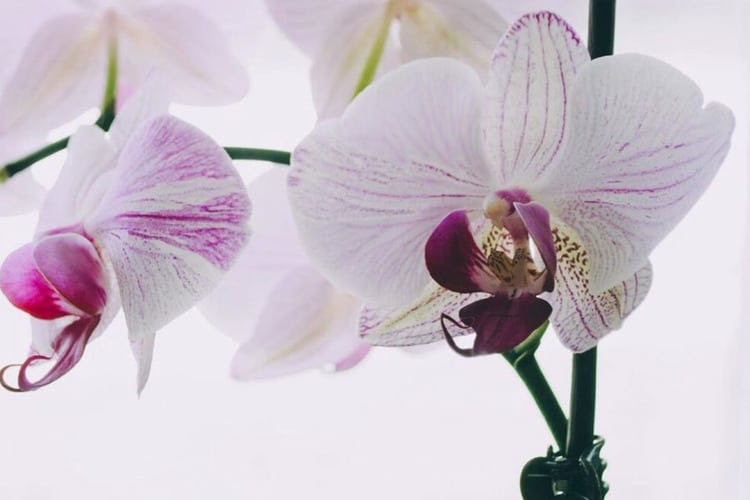
Orchids add striking and elegant beauty to the garden’s ambiance. To retain that exotic presence and ensure timely bloom, the gardener needs to apply regular fertilization.
Since this flower is a light feeder, you might notice a lot of leftovers after misting it with fertilizer. A passionate gardener will find using leftover orchid fertilizer to grow other plants a suitable idea. Can I use orchid fertilizer on other plants?
Not all houseplants may be suitable for orchid fertilizer, as different plants have different nutrient requirements. Before using orchid fertilizer on a plant, it is important to research its specific nutrient needs. Although the strength is weaker compared to regular universal products, it still offers some equal nutrients.
It is an economical idea for gardeners. In this article, we’ll give a more detailed answer to this question.
Can I Use Orchid Fertilizer On Other Plants?
The answer is yes. You can use orchid fertilizer as regular plant food for other houseplants to make them thrive. If you look at the ingredient lists of orchid food products and universal plant foods, you’ll notice they share many ingredients in common, just in different amounts.
Since most universal plant foods are for terrestrial greeneries growing from under the ground, their nutrient amounts are larger than those required by orchids. Orchid fertilizer also contains some elements that other houseplants specifically require and will be well nourished with. However, different vegetables have different nutrient requirements. It is important to research the specific needs of each vegetable before using orchid fertilizer on them.
Read more: How Do You Fertilize Orchids? (The Best Nutrient Ratio)
What Is In Orchid Fertilizer?
Let’s break it down to see what nutrients are in orchid plant food.
Composition of Orchid Fertilizer:
Primary Macronutrients:
- Nitrogen
Nitrogen is extremely vital to this flower, as it helps produce chlorophyll and supports the growth of leaves. In orchid fertilizers, nitrogen is often provided in two forms: ammoniacal and nitrate. The balance between these two forms can influence the pH of the growing medium.
- Phosphorus
Orchids employ phosphorus to help develop roots, seeds, and flowers. Essential for energy transfer in the plant, it aids in root development, flower initiation, and overall energy transfer processes.
While normal houseplants typically require about 5% phosphorus, orchids require 10% phosphorus. With extra phosphorus and nitrogen in orchid manure, it might be too overdosed for typical fertilization on plants in the garden.
- Potassium
Potassium plays a critical role in the general well-being of either orchids or other vegetables. It plays a role in photosynthesis, protein synthesis, and the regulation of various plant processes.
Secondary Macronutrients:
- Orchids need calcium (Ca) for healthy cell wall formation and development. Roots and shoots can be weakened by a deficit.
- Magnesium (Mg) is essential to photosynthesis and enzyme activity, and it makes up a large portion of the chlorophyll molecule.
- Sulfur (S): vital for plant growth and production of a number of vital amino acids and vitamins.
What Plants Can You Use For Orchid Fertilizer?
Orchids are unique and beautiful, and they have their own special food called orchid fertilizer. But have you ever wondered if other plants might like this special food too? Let’s find out!
Air Plants
Just like orchids, air plants can grow without soil. They might enjoy the special nutrients in orchid fertilizer.
If your landscape has both orchids and air plants, there’s no need to buy different food products for them. As long as your orchid manure has scant copper, it will function effectively. To achieve maximum results, you can dilute it before applying it.
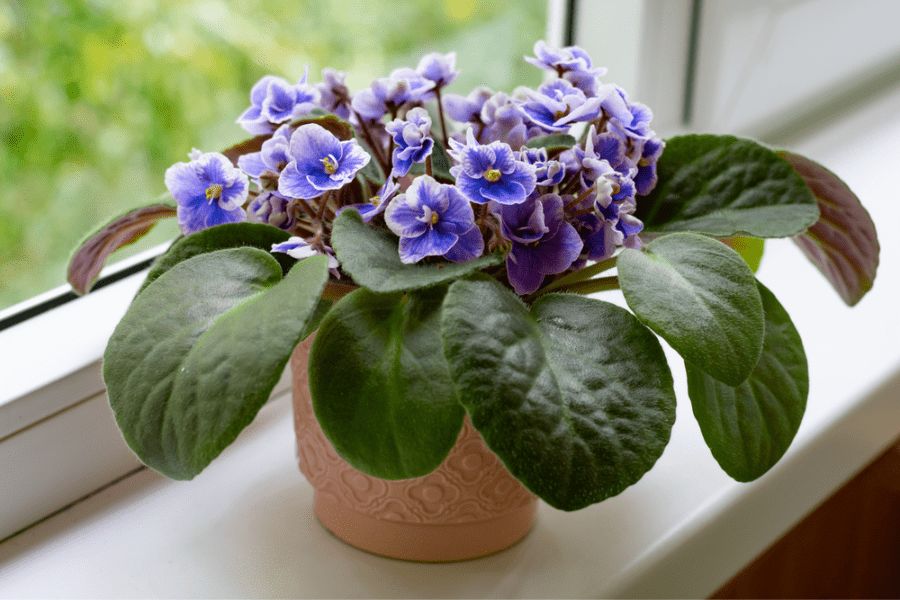
African Violets
African violets are a perfect choice if you’re thinking about growing something besides your existing charming flower. One of the reasons is that they can consume and thrive on Phalaenopsis fertilizer. Also, African violets develop in quite the same environment as Phalaenopsis and share similar tastes regarding nutrient requirements.
Ferns
Some ferns grow on trees, just like orchids. Especially the epiphytic ferns, which grow on trees (like staghorn ferns), can enjoy the nutrients in orchid fertilizer. They have similar nutrient needs to orchids because they both grow in places where nutrients can be hard to find.
Succulents
Any kind of succulent will appreciate the nutrients included in Phalaenopsis food products. Because they also require a scattered water schedule like most common types of orchids (except for ones with high humidity), succulents are sure to benefit from food leftovers used for Phalaenopsis.
Peace Lily
The leftovers are useful on peace lilies since these greens are a balanced combination of N, P, and K. Experienced farmers would suggest treating peach lilies with a high-quality water-soluble product.
This nutrient source will beautifully meet their requirements without exposing them to any unhealthy harm. Concerning houseplant fertilizer with a balanced N-P-K ratio, nothing surpasses orchid food. This great advantage makes it an excellent assistant for growing peace lilies.
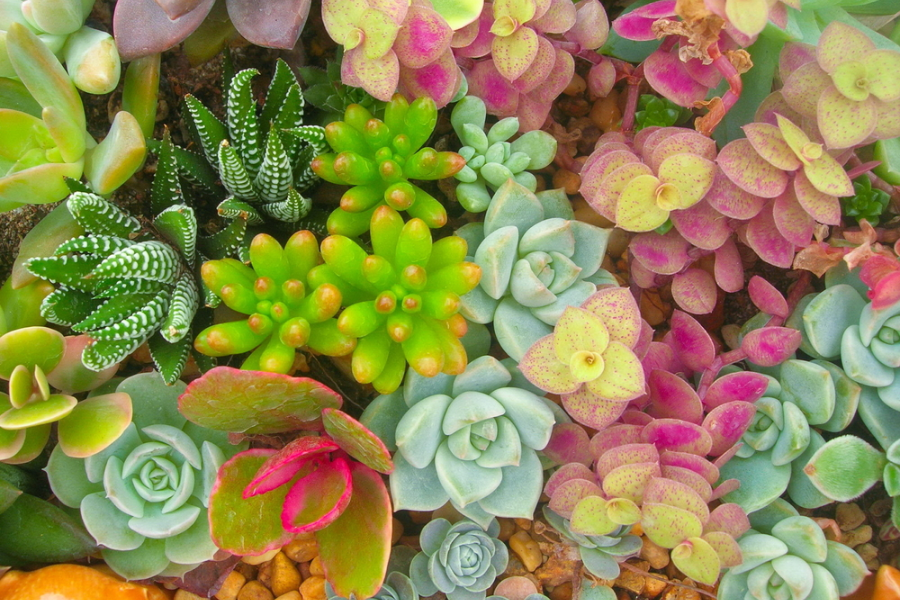
Roses
Like other general manures, orchid fertilizer contains nutrients and chemicals that can meet the nutritional demands of any plan. Apart from the primary elements (phosphorus, potassium, and nitrogen), Phalaenopsis food contains magnesium, molybdenum, calcium, boron, zinc, iron, manganese, and copper.
These micronutrients help with the development of most vegetables, accelerating the photosynthesis rate. A scanty amount of Phalaenopsis nutrient source won’t cause any harm and will help many herbs stay fit.
To remind you, compare the ratio of N-P-K of the plant and the manure before applying it as ordinary manure to ensure the desired result.
Will The Potassium In Orchid Fertilizer Help Other Plants?
Potassium helps maintain the flower’s health while fighting infections and preventing diseases. This element is part of the greenery’s natural defence line, assisting in overall nourishment. Orchids utilise potassium to strengthen their immune systems and fight against bacteria and pests. Potassium also contributes to the flower’s resistance against cold, drought, heat, and overwatering.
Besides, this element functions as a critical regulator for the stomata’s closing and opening, controlling the leaves’ gas exchange. The lack of potassium will hinder the natural exchange, and the flower will start to wilt. Potassium plays a vital role in caring for the leaves, where the stomata of pores are present. The first sign of a potassium shortage is leaves with yellow tips.
Is Orchid Acid Loving Plant?
Are orchids considered acid-loving plants? They are not well suited to excessive fertilizer or water. Indeed, Phalaenopsis Blume usually performs better when living in light, acidic water with a pH level of around 6.5. However, this plant is pretty adaptable and can easily adjust to most conditions.
In general, it’s advisable to keep either the pH level of your fertilizing solution or the pH level of the orchid manure within the ideal range for nutrient and mineral absorption. Most orchids thrive best in a pH range of 5.5 to 6.0. A lower pH will allow your plants to soak up the essential nutrients they require to grow and flourish.
Are There Any Side Effects Of Using Orchid Fertilizer On Other Plants?
Using orchid fertilizer in your garden is generally safe, as long as you avoid applying it to herbs and fruits and over-fertilizing them. Because you and your family will consume those edible vegetables later, fertilizers can impair the eater’s body.
Identifying Potential Misfits:
Carnivorous Plants (Venus Flytrap, Pitcher Plant): These plants derive some of their nutrients from capturing and digesting insects. They usually prefer nutrient-poor soils, and introducing orchid fertilizer might upset their unique balance.
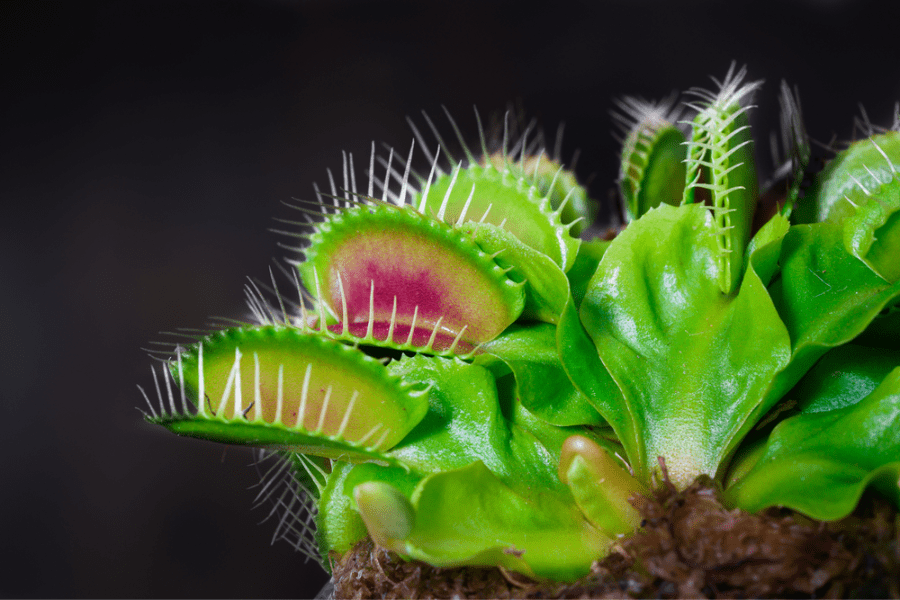
Acid-Loving Plants: Plants like azaleas, rhododendrons, and blueberries prefer acidic soil. The pH level of orchid fertilizer might not be suitable for these acid-loving plants, affecting their nutrient uptake.
Root Vegetables (Carrots, Potatoes, Beets): These plants prioritize root development. The nutrient balance in orchid fertilizer, especially if it’s high in nitrogen, might promote leafy growth at the expense of root development.
Also, different plants have different requirements for nutrients. Most garden herbs and blooming plants consume a tiny dose of food. The excess amount will pose side effects. In the worst case, providing vegetables with too high concentrations could result in their death. Excessive compost will generally cause irreparable harm, be it to a lily, orchid, or any green being.
Read more: Should You Fertilize Orchids When They Are In Bloom? Guides
Nitrogen Matters
Well-built foliage fosters a flower’s photosynthesis rate and increases its growth speed. Nitrogen is a critical part of healthy foliage. If you notice a plant’s leaves wilting or experiencing stunted growth, check the nitrogen levels in its soil.
Phalaenopsis food contains plenty of nitrogen, which stimulates the branching of new stems and leaves and boosts the blooming process. Improving a plant’s foliage system aside, nitrogen count also provokes chlorophyll production, which speeds up photosynthesis.
Avoid Overfeeding
Many beginner gardeners believe that more nutrients are always better, which is incorrect. Most houseplants require fertilization once every 2-3 months. Some manures can impair your flowers if applied in excess. Because orchid fertilizer contains more potassium, phosphorus, and nitrogen.
This practice, of course, could damage or even lead to the death of vegetables if applied too often. Plus, orchids need fertilization every week, whereas regular houseplants, as said, require fertilization every 2-3 months. Frequently feeding orchid manure to other plants can weaken them quickly.
Conclusion
The answer to “Can you use orchid fertilizer on other plants?” is yes in most cases, provided that you employ the right amount. Orchid manure contains all the macronutrients that nearly every plant will appreciate.
Thus, I have helped you answer questions about the process of fertilizing your plants.
FAQs


